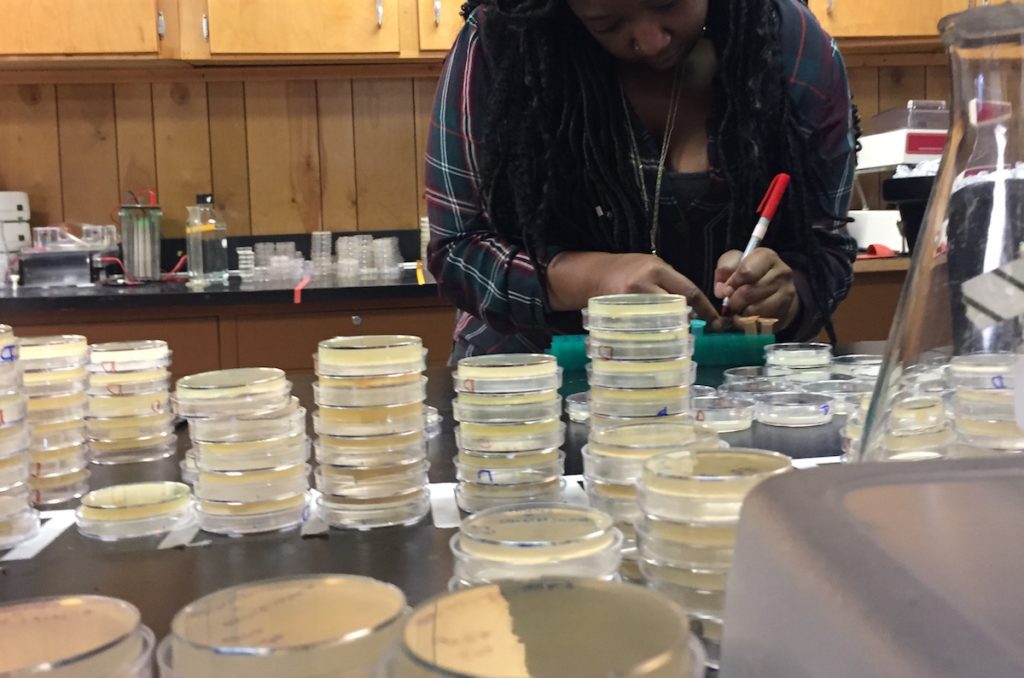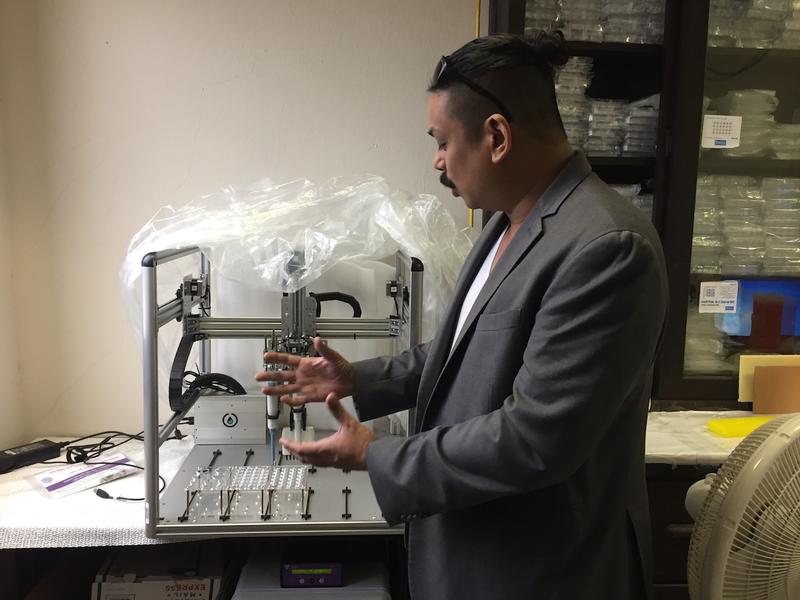
For such a small school, Fisk University attracts a lot of funding for scientific research.
This is the second year in a row that it’s been ranked in the top five liberal arts schools in the country in terms of research dollars, according to Washington Monthly’s rankings. It’s in part due to the historically black college’s efforts to recruit faculty who embrace the school’s focus on students but still win big grants.
One of those recent recruits is Steven Damo, an assistant professor of chemistry, biochemistry and molecular biology. His lab is spread out across the third floor of Talley Brady, a stately brick building on campus with a historical marker outside.
“Saint Elmo Brady was actually the first African American to get his Ph.D. in chemistry in the United States,” Damo explains.
Brady got his undergrad degree at Fisk in 1908 — although he earned his Ph.D. at the University of Illinois because Fisk didn’t offer terminal degrees.
That’s still the case: The highest a student can obtain from Fisk is a master’s. The school’s focus has always been teaching undergrads, not graduate-level research. (This year, Fisk has 664 undergrads and 37 master’s students.)
Since classrooms are the priority, lab real estate is tight. Damo shares space with other researchers. The equipment is much smaller than what he worked with in grad school at the University of California, Berkeley.
“We have all of the functioning infrastructure, instrumentation and components of a major university, but things are miniaturized,” he says.
When Damo was looking for faculty positions several years ago, he wasn’t even considering schools like Fisk. But he came across the job posting and was compelled by the mission to mentor minority students in the sciences.
“The science is important, but when I thought about my legacy, I realized that it was the students that mattered the most,” he says.

And when he approached the school with his ideas for research — expensive propositions by the standards of a small, liberal arts school, he says — they agreed to provide him with startup funds.
Damo is one of the rising research stars who the university hopes will further elevate the school’s reputation in the sciences. Fisk already has a handful of established heavyweights, especially in physics, who consistently bring in big grants.
This is an approach that more colleges are trying to make up for losses in funding and to stem rising tuition: Encourage faculty to apply for research grants, which can boost the school’s budget and raise its prestige. But there’s also a risk in getting too enamored with scientific research, says Fisk provost Rod Hanley.
“We still maintain our identity as a liberal arts college that has a strong emphasis in the undergraduate experience and teaching experience,” he says. “As a provost, I would hate to lose that identity.”
To keep that balance, the school requires all professors — even those doing research — to teach undergrads. Hanley also stresses that they give students real experience in their labs.
“It’s not uncommon for students to have their names on peer-reviewed publications within scientific journals, and that’s a very unusual thing for an undergraduate,” he says.
The overall system seems to be working. Steven Damo, for example, realized he could get a lot done with small equipment, shared spaces and a staff of mostly undergrads. In the four years he’s been at Fisk, he says he’s brought in about $6 million for his chemistry and molecular biology work.


